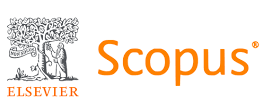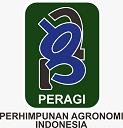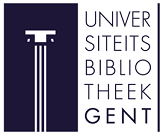Understanding the Key Determinants of Farmer Loyalty in Sugarcane Farming: Insights from Indonesia
Abstract
Granulated sugar is a vital ingredient in Indonesia, widely used as a sweetener in various food and beverage applications. To meet increasing domestic demand, the government has targeted sugar self-sufficiency by 2025. The Indonesian Long-Term Development Plan 2020–2024 outlines efforts to enhance sugarcane productivity. This study aims to identify the factors influencing farmer loyalty in sugarcane cultivation in Indonesia. A quantitative approach was employed to examine the relationships between government policy, sugar company policy, farmer behavior, and cooperative member participation (independent variables) and farmer loyalty (dependent variable). The data were analyzed using SmartPLS version 4. The results indicate that government policy and cooperative member participation do not significantly affect farmer loyalty, while farmer behavior and sugar company policy have a significant positive influence. Notably, the policies of sugar companies play a pivotal role in shaping farmers’ commitment to sugarcane cultivation. These findings suggest that strengthening farmer behavior and enhancing company-level policies can improve loyalty. Furthermore, the results imply that government efforts toward sugar self-sufficiency should not only focus on policy formulation but also ensure alignment with farmers' practical needs and support systems. Integrating sugar company strategies with national agricultural policies could enhance the effectiveness of government programs and accelerate the achievement of self-sufficiency targets.
Keywords
Full Text:
PDFReferences
Ali, M., & Ika Pratiwi, Y. (2022). The Effect of Buds Location on Stem Cuttings on Sugarcane (Saccharum officinarum L.) Germination. Agro Bali: Agricultural Journal, 5(3), 454–460. https://doi.org/10.37637/ab.v5i3.1050
Ajzen, I. (1991). The theory of planned behavior. Organizational Behavior and Human Decision Processes, 50(2), 179–211. https://doi.org/10.1016/0749-5978(91)90020-T
Anonymous. (2014). Gubernur jawa timur peraturan gubernur jawa timur. 1950, 1–35.
Antwi‐Agyei, P., Dougill, A., & Abaidoo, R. (2021). Opportunities and barriers for using climate information for building resilient agricultural systems in Sudan savannah agro-ecological zone of north-eastern Ghana. Climate Services, 22, 100226. https://doi.org/10.1016/J.CLISER.2021.100226
Appau, A., Drope, J., Goma, F., Magati, P., Labonte, R., Makoka, D., Zulu, R., Li, Q., & Lencucha, R. (2020). Explaining why farmers grow Tobacco: Evidence from Malawi, Kenya, and Zambia. Nicotine and Tobacco Research, 22(12), 2238–2245. https://doi.org/10.1093/ntr/ntz173
Badunenko, O., & Romero-Ávila, D. (2014). Productivity Growth across Spanish Regions and Industries: A Production-Frontier Approach. Regional Studies, 48, 1242–1262. https://doi.org/10.1080/00343404.2012.709611
Barney, J. (1991). Firm resources and sustained competitive advantage. Journal of Management, 17(1), 99–120. https://doi.org/https://doi.org/10.1177/014920639101700108
Charinda, L. (2015). Sustainable solutions to the resuscitation of agricultural cooperatives in Zimbabwe: a case for Manicaland Province.
Clay, D. C., Bro, A. S., Church, R. A., Ortega, D. L., & Bizoza, A. R. (2018). Farmer incentives and value chain governance: Critical elements to sustainable growth in Rwanda’s coffee sector. Journal of Rural Studies, 63(June), 200–213. https://doi.org/10.1016/j.jrurstud.2018.06.007
Engström, L., & Hajdu, F. (2019). Conjuring ‘Win-World’–Resilient Development Narratives in a Large-Scale Agro-Investment in Tanzania. Journal of Development Studies, 55(6), 1201–1220. https://doi.org/10.1080/00220388.2018.1438599
Floress, K., Reimer, A., Thompson, A., Burbach, M., Knutson, C., Prokopy, L., Ribaudo, M., & Ulrich-Schad, J. (2018). Measuring farmer conservation behaviors: Challenges and best practices. Land Use Policy, 70(November 2017), 414–418. https://doi.org/10.1016/j.landusepol.2017.11.030
Galluzzo, N. (2018). A preliminary quantitative analysis of rurality in Romania and the impact of common agricultural policy subsidies. Review of Agricultural and Applied Economics, 21(2), 128–135. https://doi.org/10.15414/raae.2018.21.02.128-135
Gonçalves, F., Perna, R., Lopes, E., Maciel, R., Tovar, L., & Lopes, M. (2021). Strategies to improve the environmental efficiency and the profitability of sugarcane mills. Biomass and Bioenergy, 148(March), 106052. https://doi.org/10.1016/j.biombioe.2021.106052
Hair, J. F., Risher, J. J., Sarstedt, M., & Ringle, C. M. (2019). When to use and how to report the results of PLS-SEM. European Business Review, 31(1), 2–24.
Henseler, J., Ringle, C. M., & Sarstedt, M. (2016). Testing measurement invariance of composites using partial least squares. International Marketing Review, 33(3), 405–431.
Heryanto, M. A., & Suryatmana, E. R. (2020). Dinamika Agroindustri Gula Indonesia: Tinjauan Analisis Sistem. Agricore: Jurnal Agribisnis Dan Sosial Ekonomi Pertanian Unpad, 5(2), 194–210. https://doi.org/10.24198/agricore.v5i2.32100
Horská, E., Petriľák, M., Šedík, P., & Nagyová, Ľ. (2020). Factors influencing the sale of local products through short supply chains: A case of family dairy farms in Slovakia. Sustainability (Switzerland), 12(20), 1–17. https://doi.org/10.3390/su12208499
Huang, Q., Wang, H., & Chen, C. (2023). The Influence of Government Regulation on Farmers’ Green Production Behavior—From the Perspective of the Market Structure. International Journal of Environmental Research and Public Health, 20(1). https://doi.org/10.3390/ijerph20010506
Ibrahim, T. S., & Workneh, T. S. (2019). Development and current status of the sugar industry in Sudan. Sugar Industry, 144(11), 655–659. https://doi.org/10.36961/si23795
Istifadhoh, E., Patiung, M., & Wisnujati, N. S. (2024). Optimizing Agricultural Food Institutions at the Farmer Level to Enhance Rice Productivity: A Strategic Approach for Sustainable Development. Aurora: Journal of Emerging Business Paradigms, 1(2), 88–99. https://doi.org/10.62394/aurora.v1i2.138
Kassem, H. S., Shabana, R. M., Ghoneim, Y. A., & Alotaibi, B. M. (2020). Farmers’ perception of the quality of mobile-based extension services in Egypt: A comparison between public and private provision. Information Development, 36(2), 161–180. https://doi.org/10.1177/0266666919832649
Kodithuwakku, S., & Weerakoon, C. (2020). Embracing Entrepreneurship in Sri Lankan Agribusiness Research: A Review and a Research Agenda. https://doi.org/10.1007/978-981-15-3673-1_21
Koo, W. W., & Taylor, R. D. (2015). 2015 Outlook of the U . S . and World Sugar Markets , 2014-2024. March, 2010–2020.
Leite, J. G. D. B., Langa, F. M., von Maltitz, G., Leal, M. R. L. V, & Cortez, L. A. B. (2020). Sugarcane outgrower schemes model: Friend or foe? A question for smallholder farmers in Mozambique. World Development Perspectives, 19, 100232. https://doi.org/10.1016/j.wdp.2020.100232
Mazwan, M. Z., & Masyhuri, M. (2019). Alokasi Penggunaan Input Produksi Tebu Perkebunan Rakyat di Jawa Timur (Studi Kasus Petani Tebu Plasma PTPN XI). Jurnal Ekonomi Pertanian Dan Agribisnis, 3(1), 138–151.
https://doi.org/10.21776/ub.jepa.2019.003.01.14
Mishra, A. K., Kumar, A., Joshi, P. K., D’Souza, A., & Tripathi, G. (2018). How can organic rice be a boon to smallholders? Evidence from contract farming in India. Food Policy, 75(August 2017), 147–157. https://doi.org/10.1016/j.foodpol.2018.01.007
Mitheu, F., Petty, C., Tarnavsky, E., Stephens, E., Ciampi, L., Butsatsa, J., & Cornforth, R. (2022). Identifying the Barriers and Opportunities in the Provision and Use of Weather and Climate Information for Flood Risk Preparedness: The Case of Katakwi District, Uganda. https://doi.org/10.3389/fclim.2022.908662
Morfi, C., Ollila, P., Nilsson, J., Feng, L., & Karantininis, K. (2015). Motivation behind members’ loyalty to agricultural cooperatives. Interfirm Networks: Franchising, Cooperatives and Strategic Alliances, 173–190. https://doi.org/10.1007/978-3-319-10184-2_9
Oelofse, R., & Walt, J. V. D. (2015). An evaluation of South African worker co-operatives against specified business success factors. Journal of Contemporary Management, 12, 289–312.
Okumah, M., Chapman, P. J., Martin-Ortega, J., Novo, P., Ferré, M., Jones, S., Pearson, P., & Froggatt, T. (2021). Do awareness-focussed approaches to mitigating diffuse pollution work? A case study using behavioural and water quality evidence. Journal of Environmental Management, 287(February). https://doi.org/10.1016/j.jenvman.2021.112242
Ostrom, E. (1990). Governing the commons: The evolution of institutions for collective action. Cambridge university press.
Owusu, V., Ma, W., Renwick, A., & Emuah, D. (2020). Does the use of climate information contribute to climate change adaptation? Evidence from Ghana. Climate and Development, 13, 616–629. https://doi.org/10.1080/17565529.2020.1844612
Pandanwangi, K., Putra, A. R. S., Haryadi, F. T., Astuti, A., & Syahlani, S. P. (2023). Does product certification matter? A review of mechanism to influence customer loyalty in the poultry feed industry. Open Agriculture, 8(1). https://doi.org/10.1515/opag-2022-0160
Petrescu-Mag, R. M., Banatean-Dunea, I., Vesa, S. C., Copacinschi, S., & Petrescu, D. C. (2019). What do Romanian farmers think about the effects of pesticides? Perceptions and willingness to pay for bio-pesticides. Sustainability (Switzerland), 11(13), 1–16. https://doi.org/10.3390/su11133628
Pivoto, D., Waquil, P. D., Talamini, E., Finocchio, C. P. S., Dalla Corte, V. F., & de Vargas Mores, G. (2018). Scientific development of smart farming technologies and their application in Brazil. Information Processing in Agriculture, 5(1), 21–32. https://doi.org/10.1016/j.inpa.2017.12.002
Regan, Á., & Kenny, U. (2022). What Do the Public Want to Know about Farming and Why? Findings from a Farmer-Initiated Public Consultation Exercise in Ireland. Sustainability (Switzerland), 14(9). https://doi.org/10.3390/su14095391
Rigg, J., Salamanca, A., Phongsiri, M., & Sripun, M. (2018). More farmers, less farming? Understanding the truncated agrarian transition in Thailand. World Development, 107, 327–337. https://doi.org/10.1016/j.worlddev.2018.03.008
Rizki Ramadhan, M. A., Sastrya Wanto, H., & Wisnujati, N. S. (2024). Unlocking Consumer Satisfaction: How Product Quality, Service Quality, and Preferences Drive Hydroponic Lettuce Purchases. Aurora: Journal of Emerging Business Paradigms, 1(2), 60–74. https://doi.org/10.62394/aurora.v1i2.139
Saufi, M. (2017). Analisa Faktor-Faktor yang Mempengaruhi kepuasan Petani Tebu Sebagai Upaya Meningkatkan Loyalitas Terhadap Pabrik gula Pesantren Baru. Jurnal Revitalisasi, 06(September), 1–8.
Schermelleh-Engel, K., Moosbrugger, H., & Müller, H. (2003). Evaluating the Fit of Structural Equation Models: Tests of Significance and Descriptive Goodness-of-Fit Measures. Methods of Psychological Research, 8(2), 23–74. https://psycnet.apa.org/record/2003-08119-003
Scott, W. R. (2017). Institutional theory: Onward and upward. In The Sage handbook of organizational institutionalism (Vol. 900). Sage London.
Sekaran, U., & Bougie, R. (2011). Research Methods for Business: A Skill-Building Approach, 6th Edition.
Sirdeshmukh, D., Singh, J., & Sabol, B. (2002). Consumer trust, value, and loyalty in relational exchanges. Journal of Marketing, 66(1), 15–37. https://doi.org/10.1509/jmkg.66.1.15.18449
Solomon, S., & Swapna, M. (2022). Indian Sugar Industry: Towards Self-reliance for Sustainability. Sugar Tech, 24(3), 630–650. https://doi.org/10.1007/s12355-022-01123-5
Suhesti, E., Mayangsari, A., Pertanian, F., & Saleh, A. (2022). Improving the income of sugar cane farmers through more intensive farming management. Integritas: Jurnal Pengabdian, 6(2), 279–290.
Sunandar, B., Prawiranegara, D., & Suryani, A. (2021). Faktor-Faktor Yang Mempengaruhi Perilaku Petani Dalam Purwakarta Influencing Factors on Farmer Behavior in Adopting a Jajar Legowo 2 : 1 Innovation of Rice Planting in the Purwakarta District. CR Journal, 7(1), 17–30.
Susilo, D., & Yuniati, S. (2016). Kebijakan perdagangan gula Indonesia dan kesejahteraan petani tebu. Pemberdayaan Dan Inovasi Tata Kelola Pemerintahan Daerah Dan Desa, 89–101.
Warsim, W., Titirloloby, P., & Ambarita, E. (2021). Loyalitas Petani Tebu Terhadap Keberlanjutan Usaha Tani Tebu di Cirebon. Paradigma Agribisnis, 4(1), 1. https://doi.org/10.33603/jpa.v4i2.5885
Wisnujati, N. S., Zuhriyah, A., Sangadji, S. S., & Suhardi, S. (2025). Management project performance in Indonesia’s food estate development: A stakeholder, institutional, and communication perspective. Journal of Project Management, 10(2), 417–428. https://doi.org/10.5267/j.jpm.2024.12.004
Zantsi, S. (2021). Why do agricultural co-operatives fail to attract youth and create rural employment? Evidence from a case study of Zanokhanyo in Butterworth, Eastern Cape. South African Journal of Agricultural Extension, 49, 183–197. https://doi.org/10.17159/2413-3221/2021/V49N1A10785
Zárate, I. M. S., Damián, M. A. M., Alvarado, C. M. C., Alcalá, R., Hernández, M. I. G., & Toscano, J. H. (2021). Productivity and technological change in the sugarcane agroindustry in Mexico.
Zeweld, W., Van Huylenbroeck, G., Tesfay, G., & Speelman, S. (2017). Smallholder farmers’ behavioural intentions towards sustainable agricultural practices. Journal of Environmental Management, 187, 71–81.
https://doi.org/10.1016/j.jenvman.2016.11.014
Zulu, N. S., Sibanda, M., & Tlali, B. S. (2019). Factors affecting sugarcane production by small-scale growers in Ndwedwe Local Municipality, South Africa. Agriculture (Switzerland), 9(8), 1–14. https://doi.org/10.3390/agriculture9080170
Refbacks
- There are currently no refbacks.



























